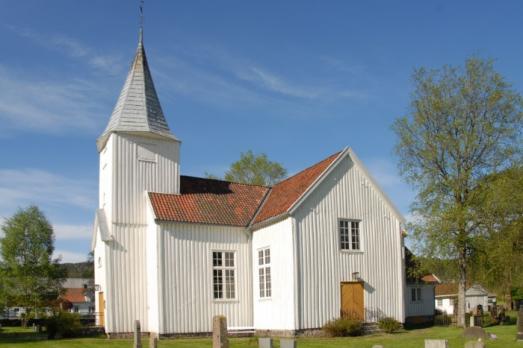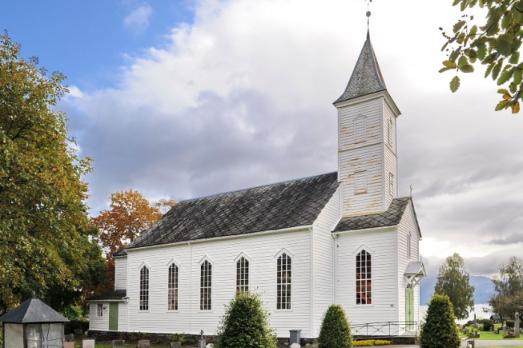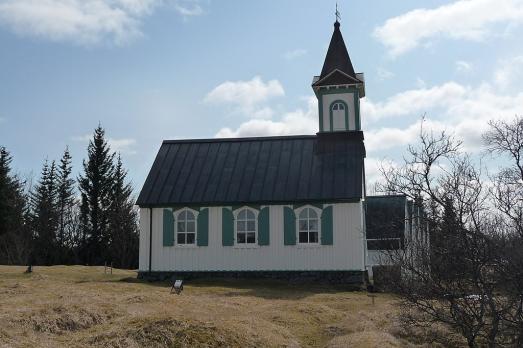
Øyjar kapell
Vestre Slidre, NO
Øyjar chapel is a wooden building completed in 1964. The chapel has a long plan and was designed by architect Karl Stenersen.
Here you can search for a building to visit. You can use the map find destinations, or you can use the filters to search for a building based upon what different criteria.

Vestre Slidre, NO
Øyjar chapel is a wooden building completed in 1964. The chapel has a long plan and was designed by architect Karl Stenersen.

Marker, NO
Øymark church is a long church from 1879. The architect of the church was the town engineer of Fredrikshald Gustav Blom Kielland, and it was built by farmer Sven Eng and klokker Berg. The church in Øymark, as it stands today, is the third church on the site. The first was a stave church which was demolished and replaced by a wooden church in 1725. The wooden church burned down in 1875.

Lindesnes, NO
Øyslebø church is a cruciform church dating from 1797. The church that stands today is the third on the site. The first was a stave church, which was replaced by a new church in 1460 or 1560. When the present church was built, the materials from the previous church were used for the floor.

Kvam, NO
Øystese Church, consecrated in 1868, is a typical, relatively simple long church with a roof over a two-storey porch to the west. The church was built by the builder C. Erichsen and designed by J.W. Nordan in a Swiss-style. The three-part neo-Gothic altarpiece was made by J. L. Losting in 1868.

Valhallarvegur, IS
The Þingvallakirkja, an Icelandic term which literally means "Church of the Parliament Plains" or "Church of Þingvellir", is a small church whose present building dates from 1859, but the first building was constructed on the initiative of the Norwegian King Olaf I at the time of Iceland's conversion to Christianity around the year 1000.

Đakovo, HR
The Đakovo Cathedral was built between 1866 and 1882 on the site of a baroque church. The cathedral was designed by the Viennese architect Karl Rösner, the furniture of Hermann Bollé.

Novi Pazar, RS
Đurđevi Stupovi is one of the oldest Serbian monasteries. Completed in 1171, the monastery houses valuable 13th century murals and has been a UNESCO World Heritage Site since 1979.

Łańcut, PL
The Łańcut synagogue, built in 1761 on the site of a former wooden synagogue, is one of the most valuable monuments of Jewish religious architecture in Poland. Restored in the 19th century, the synagogue was burned down during the Second World War, destroying most of its interior. Rescued in extremis from demolition in the 1950s, the synagogue was restored in 1960 and is now used as a Jewish museum.

new
The Chassidic Route is a cultural and historical trail tracing the rich legacy of Jewish communities in southeastern Poland and western Ukraine. This region was central to the rise of Chassidism in the 18th century. Here, we highlight 10 remarkable synagogues you’ll discover along this route.

he cradle of the Industrial Revolution in Germany, Chemnitz, is well-known for its industrial heritage landscape, but the city is also home to remarkable examples of religious architecture from different historical periods. Join us as we explore the key landmarks of this European Capital of Culture 2025.

The twin towns of Nova Gorica (Slovenia) and Gorizia (Italy), lying on the border between the two countries, have a rich religious heritage, steeped in centuries of tradition. If you are looking for ideas for your visit, take note of these 10 religious sites that you should not miss.